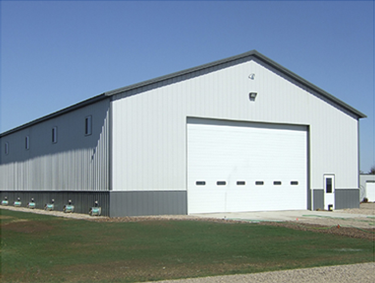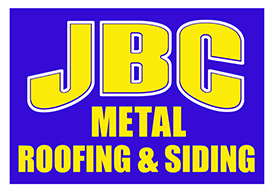Barns have been an essential part of agricultural life for centuries, providing shelter and storage for crops, animals, and equipment. Among the various types of barns, pole barns have emerged as a popular choice due to their unique construction method, cost-effectiveness, and versatility. In this comprehensive blog post, we will delve into the history of pole barns, explore their return on investment (ROI), and highlight why they continue to be a practical solution for barn construction in modern times.
The early days of pole barns
Pole barns have a rich history that dates back to ancient times. The concept of using poles as a framework for building structures can be traced back to early civilizations such as the Egyptians and Greeks. They used wooden poles driven into the ground to support their buildings, creating simple and functional structures that provided shelter for people and animals.

The origins of modern pole barns, however, can be traced to North America in the 1930s. During the Great Depression, farmers faced economic challenges and sought affordable and efficient ways to construct barns. Using readily available materials such as wood poles, these innovative farmers developed a new method of barn construction that became known as “pole barns.” These barns were characterized by their simple yet sturdy design, consisting of vertical poles embedded in the ground, horizontal purlins for support, and a metal roof.
Pole barns gained popularity due to their cost-effectiveness and practicality. Farmers could easily source materials locally, and the simple construction method allowed for quick and efficient barn building, even with minimal construction experience. Pole barns provided a durable and functional solution for storing crops, livestock, and equipment, and they quickly became a staple in agricultural communities across North America.
What is the ROI of pole barns?
One of the key reasons why pole barns continue to be popular in modern barn construction is their return on investment (ROI). Pole barns offer several financial advantages that make them a cost-effective choice for barn construction projects. Let’s explore some of the reasons why pole barns provide a favorable ROI:
- Affordability: Pole barns are typically more affordable to construct compared to traditional barns made of wood or steel framing. The simple design of pole barns requires fewer materials and labor, resulting in lower construction costs. Additionally, the use of locally available materials, such as wood poles, reduces transportation costs and makes pole barns a cost-effective option for barn construction.
- Quick Construction: Pole barns can be constructed relatively quickly compared to other types of barns. The straightforward design and construction method of pole barns allow for efficient and speedy barn building, saving time and labor costs. This quick construction timeline can be especially beneficial for farmers or property owners who need a barn built within a short timeframe to meet their agricultural or storage needs.
- Versatility: Pole barns offer versatility in design and function. They can be customized to suit various agricultural or storage requirements, such as livestock barns, hay barns, equipment storage, workshops, or garages. The open-span design of pole barns provides flexibility in interior layout and usage, allowing for easy customization to meet specific needs. This versatility makes pole barns a practical and cost-effective solution for a wide range of applications.
- Durability: Pole barns are known for their durability and longevity. The use of pressure-treated wood poles embedded in the ground provides a solid foundation, and the metal roofing and siding offer excellent protection against the elements. When properly constructed and maintained, pole barns can last for several decades, providing a long-term investment that yields a high ROI.
- Low Maintenance: Pole barns require minimal maintenance compared to other types of barns. The metal roofing and siding are resistant to rot, decay, and insect infestation, reducing the need for frequent repairs and replacements. The simple design of pole barns also means fewer components that can wear out or break, resulting in lower maintenance costs over time. This low-maintenance aspect adds to the cost-effectiveness of pole barns, making them an attractive choice for barn construction.
- Energy Efficiency: Pole barns can be designed to be energy-efficient, further contributing to their cost-effectiveness. Insulation can be added to the walls and roof of pole barns, reducing heat loss in winter and heat gain in summer, resulting in energy savings and reduced utility bills. Proper ventilation can also be incorporated into the design, improving air circulation and reducing condensation, which can help prevent mold and mildew growth. Energy-efficient features in pole barns can result in long-term savings, making them a wise investment choice.
How useful are pole barns in 2023?
Pole barns continue to be a practical solution for barn construction in modern times. They offer numerous advantages that make them a preferred choice for farmers, property owners, and commercial operators. Let’s delve deeper into the practicality of pole barns in today’s context:
- Agricultural Use: Pole barns are widely used in agricultural settings for various purposes. They can be used as livestock barns, providing shelter and protection for animals such as horses, cows, pigs, and chickens. The open-span design of pole barns allows for easy movement of animals and equipment, making them efficient for daily farming operations. Pole barns can also be used as hay barns, equipment storage, workshops, and garages, providing ample space for storing crops, machinery, and tools. The versatility of pole barns makes them a practical solution for farmers and ranchers to meet their agricultural needs efficiently and cost-effectively.
- Commercial Use: Pole barns are also used in commercial settings for a wide range of applications. They can be used as warehouses, storage facilities, workshops, and retail spaces. The open-span design of pole barns provides ample space for storing goods, setting up workstations, and accommodating commercial operations. The quick construction timeline and cost-effectiveness of pole barns make them an attractive choice for commercial operators who need efficient and affordable storage or operational space.
- Residential Use: Pole barns are gaining popularity in residential settings as well. They can be used as garages, workshops, recreational spaces, and even as homes. The open-span design of pole barns allows for flexible interior layouts, making them suitable for a wide range of residential purposes. Pole barns offer a unique and rustic aesthetic that appeals to homeowners looking for a cost-effective and practical solution for their residential construction needs.
- Recreational Use: Pole barns are also used for recreational purposes, such as horse riding arenas, indoor sports courts, and event venues. The open-span design of pole barns provides ample space for setting up recreational facilities, and their cost-effectiveness makes them an attractive choice for such applications. Pole barns can be customized to suit specific recreational requirements, providing an affordable and versatile option for recreational construction.
- Easy Customization: Pole barns offer easy customization options to suit specific needs. They can be customized in terms of size, height, roof pitch, insulation, doors, windows, and finishes. This flexibility allows for tailoring the pole barn design to meet specific requirements, whether it is for agricultural, commercial, residential, or recreational use. Pole barns can be easily modified or expanded in the future to accommodate changing needs, making them a practical and cost-effective solution for long-term use.
- Quick Construction: Pole barns are known for their fast construction timeline. Compared to traditional barn construction methods, which often involve complex and time-consuming processes, pole barns can be erected relatively quickly. The use of pre-engineered trusses and the simple design of pole barns allows for faster construction, saving both time and labor costs. This quick construction timeline makes pole barns a practical choice for those who need a barn or storage space within a short timeframe.
- Eco-Friendly: Pole barns are considered environmentally friendly as they utilize natural and renewable resources. The use of wooden poles, which can be sustainably harvested, reduces the reliance on non-renewable materials. Additionally, the metal roofing and siding of pole barns are recyclable, reducing the impact on the environment. Pole barns also require fewer materials compared to traditional barns, resulting in less waste and lower carbon footprint. This eco-friendly aspect of pole barns makes them a practical and sustainable choice for barn construction.
Why should you buy a Pole Barn?
Pole barns have a rich history and have evolved into a practical and cost-effective solution for barn construction in modern times. They offer a number of advantages, including their durability, versatility, low maintenance, energy efficiency, and customization options. Pole barns are widely used in agricultural, commercial, residential, and recreational settings, providing efficient and affordable storage, operational, and recreational spaces.
The return on investment (ROI) of pole barns is significant, as they are durable and require minimal maintenance, resulting in long-term cost savings. The quick construction timeline of pole barns also makes them a practical choice for those who need a barn or storage space within a short timeframe. Pole barns are eco-friendly, utilizing natural and renewable resources, and producing less waste compared to traditional barn construction methods.
Whether it’s for a farm, commercial facility, residential property, or recreational use, pole barns offer a practical and cost-effective solution for barn construction. With their versatility, durability, and customization options, pole barns are a reliable choice for those seeking an efficient, affordable, and sustainable solution for their barn construction needs.
Pole barns have a rich history, and their practicality in modern times cannot be overstated. From their humble beginnings as simple shelters for farmers to their evolution into versatile and cost-effective barn construction solutions, pole barns have become a popular choice for a wide range of applications. With their durability, low maintenance, energy efficiency, and customization options, pole barns offer an attractive ROI and are well-suited for agricultural, commercial, residential, and recreational use. Their quick construction timeline and eco-friendly aspects further add to their practicality and cost-effectiveness. If you are in need of a barn or storage space, pole barns are a reliable and efficient option to consider.

